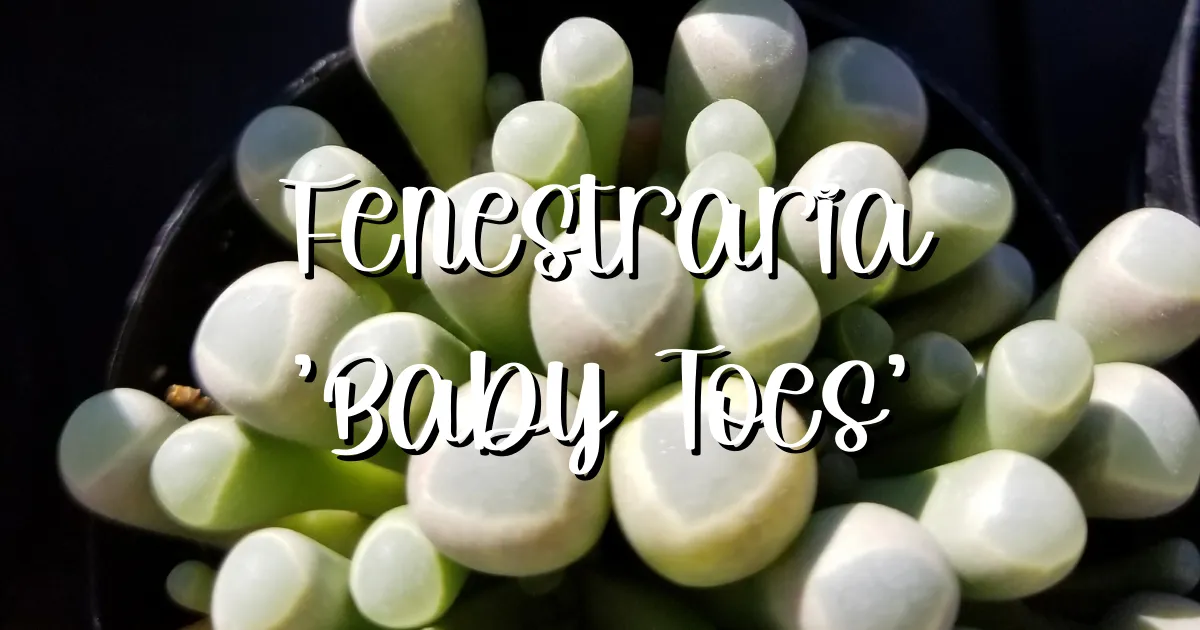Welcome to our comprehensive care guide for Fenestraria rhopalophylla, commonly known as ‘Baby Toes’. In this guide, we will provide you with all the information you need to successfully care for this unique succulent. From its natural habitat and special adaptations to its growth habits, care requirements, and common problems, we will cover everything you need to know to ensure your ‘Baby Toes’ thrive. So let’s dive in!
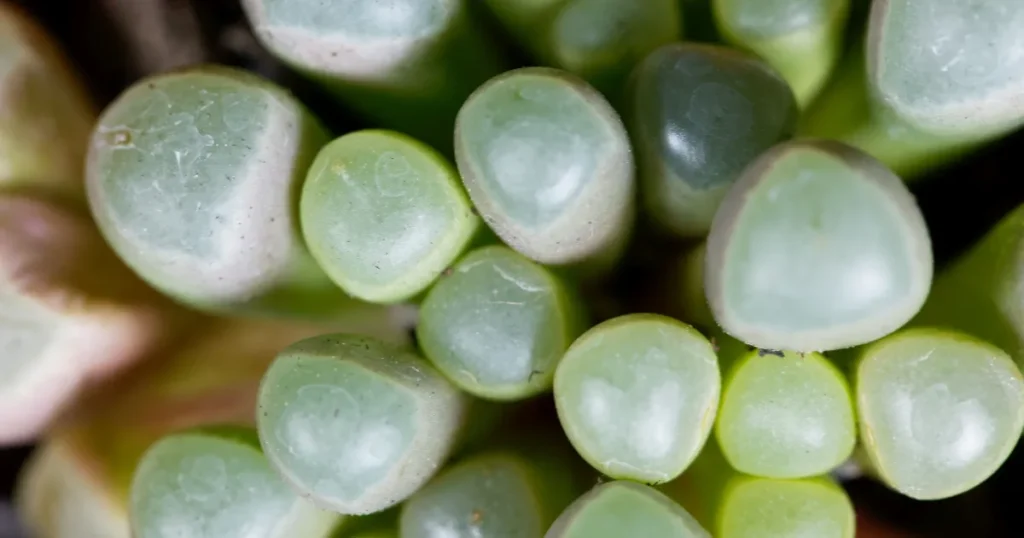
Dig in!
Source: Etsy
Natural Habitat and Common Names
Fenestraria rhopalophylla, or ‘Baby Toes’, is native to the arid regions of South Africa, particularly in the Northern Cape Province. It is commonly found growing in rocky areas, often in the shade provided by larger rocks.
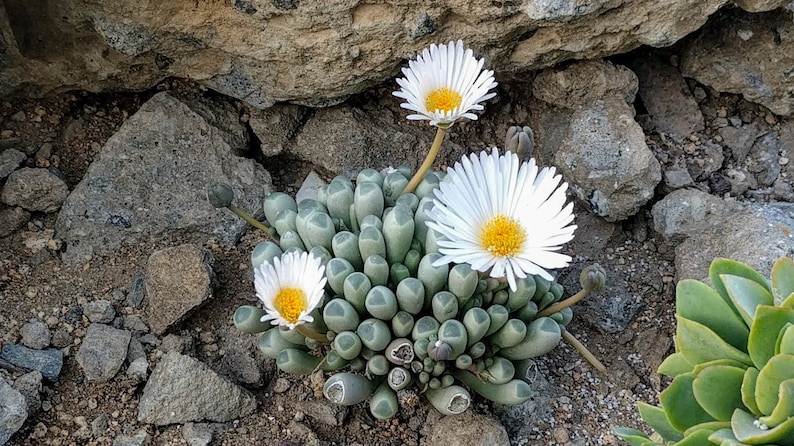
Source: Etsy
Unique Adaptations of Fenestraria rhopalophylla ‘Baby Toes’
One of the most striking features of Fenestraria rhopalophylla ‘Baby Toes’ is its unique adaptation for survival in its harsh natural environment.
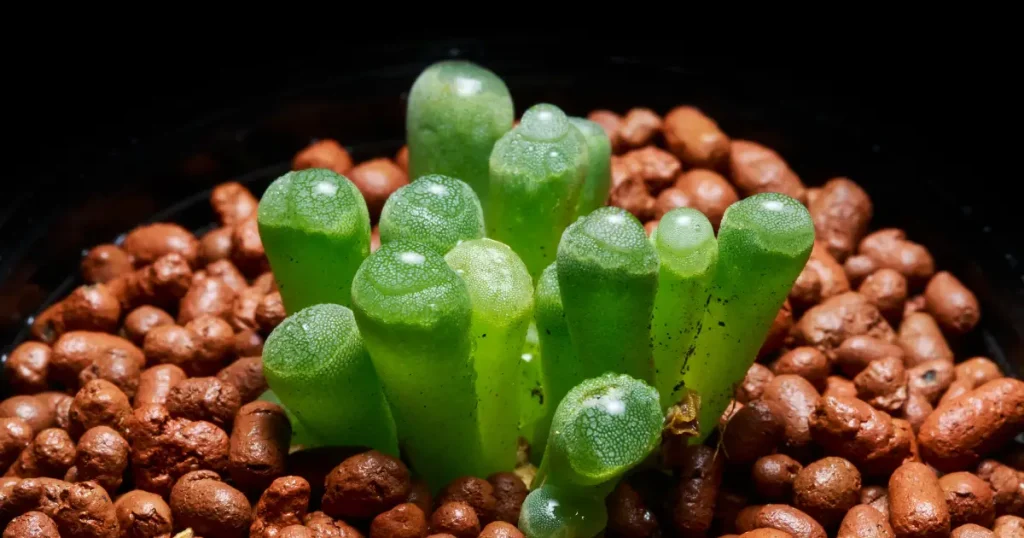
The succulent has specialized translucent leaf tips that allow light to penetrate deep into the plant, where photosynthesis takes place. This adaptation helps the plant maximize its light absorption while minimizing water loss. The leaves are also wedge-shaped, further reducing surface area and conserving water in its fleshy tissues.

Source: Etsy
Differentiation from Other Succulents
Fenestraria rhopalophylla ‘Baby Toes’ can be easily differentiated from other succulents by its distinctive leaf formations. The leaves are cylindrical and finger-like, resembling tiny toes, hence the common name ‘Baby Toes’. The translucent leaf tips and the overall compact growth habit set it apart from other succulent varieties.
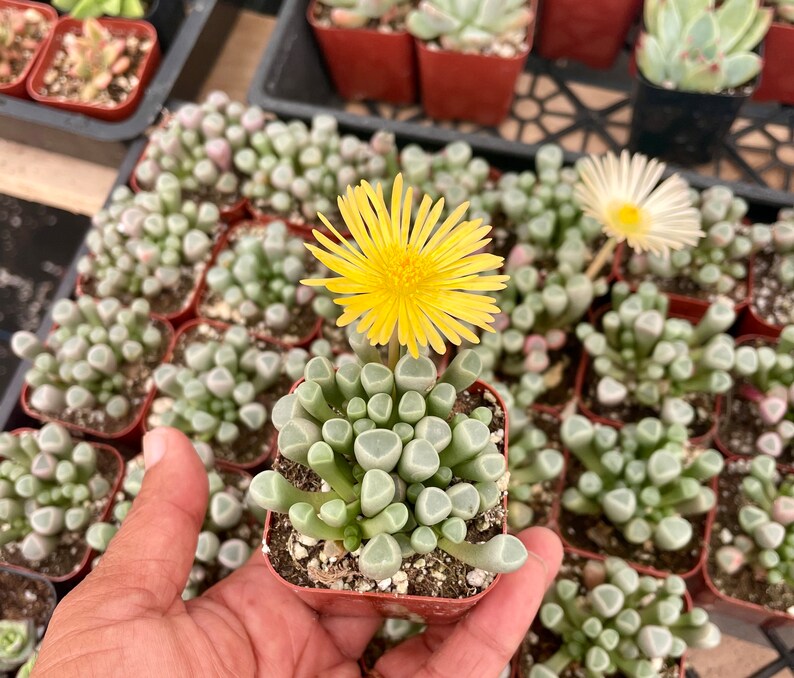
Source: Etsy
Appearance and Growth
Fenestraria rhopalophylla ‘Baby Toes’ is a small succulent that typically grows to a height of about 2 inches (5 cm) and spreads to form clumps. The plant consists of clusters of cylindrical, finger-shaped leaves emerging from a central point.
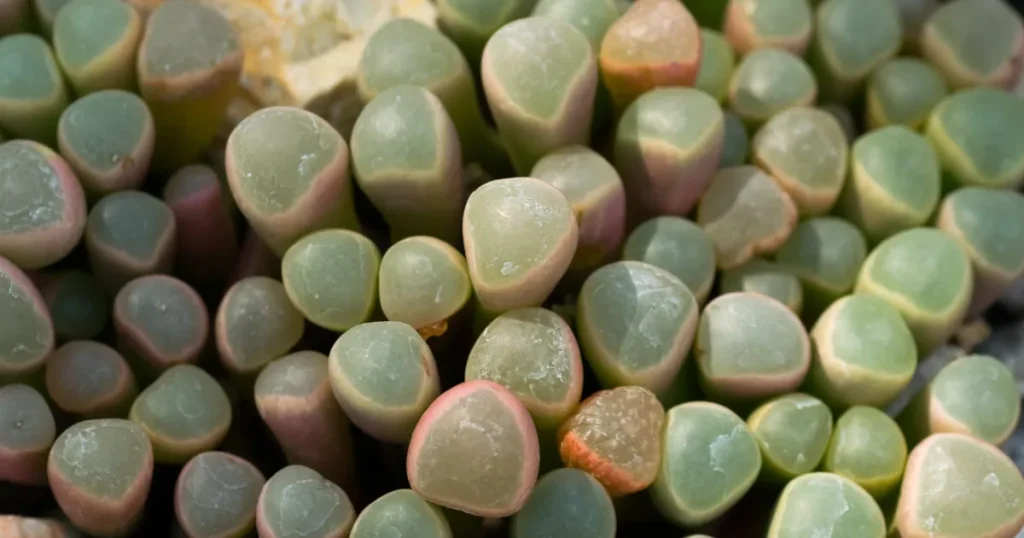
The leaves are green and have translucent tips, allowing light to penetrate. When the plant receives adequate light, the leaf tips may turn reddish or pinkish, adding further visual interest.
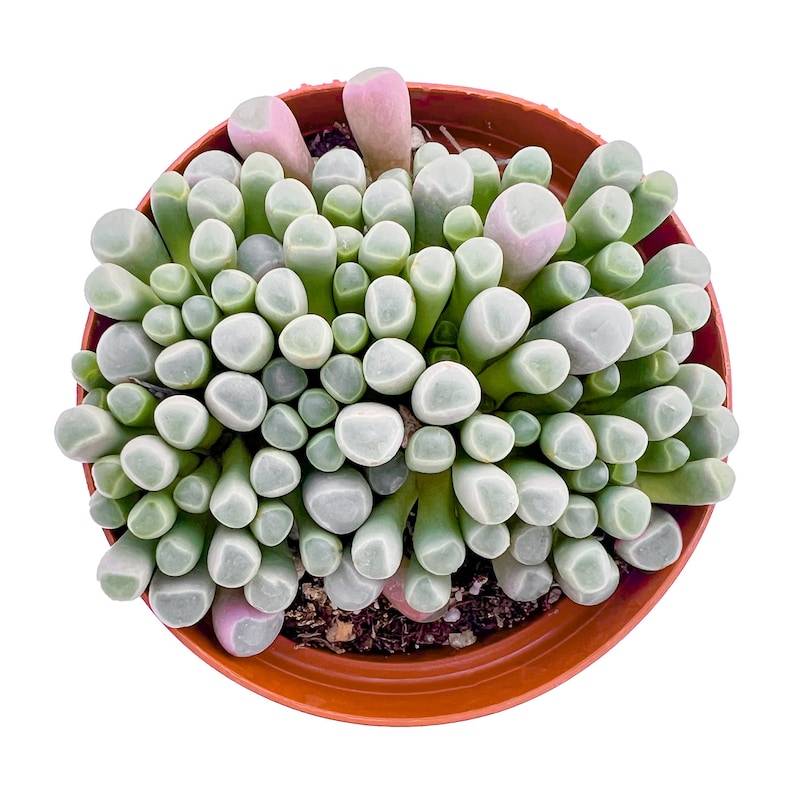
Source: Etsy
Flowering and Bloom Triggers
Fenestraria rhopalophylla ‘Baby Toes’ produces small, daisy-like flowers that emerge from the center of the plant. The flowers are typically yellow or white and bloom during the spring and summer months.
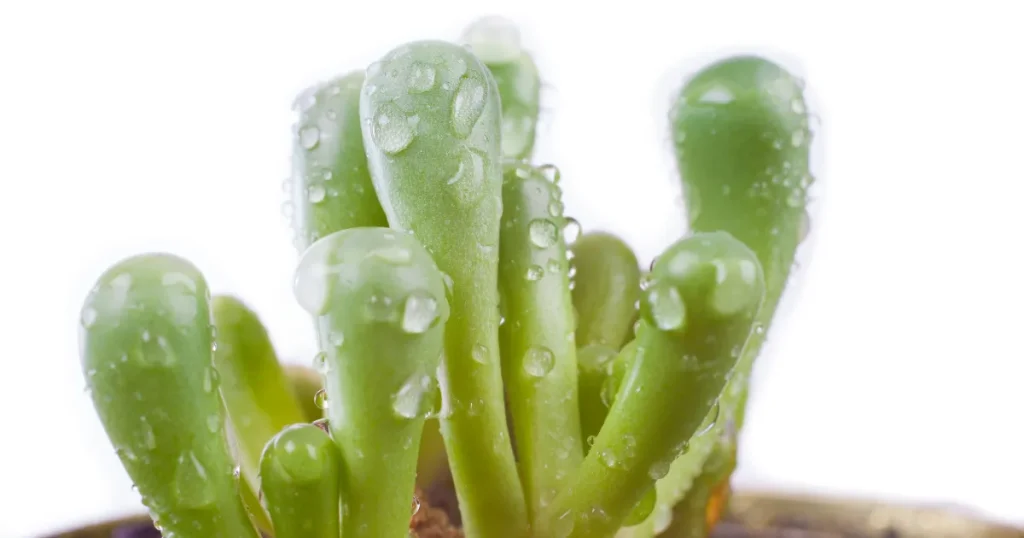
The trigger for blooming is often associated with the lengthening daylight hours and warmer temperatures. However, it’s important to note that Baby Toes may not flower every year, as flowering is influenced by various environmental factors.
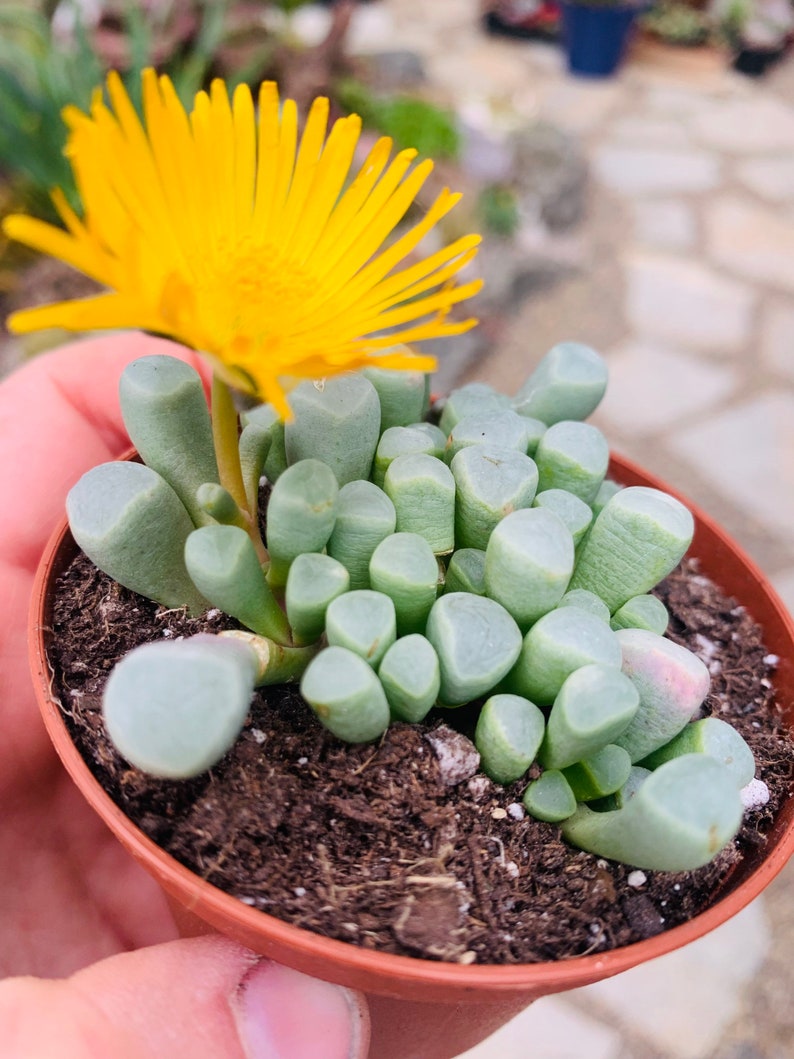
Source: Etsy
Growth Rate and Seasonality
Fenestraria rhopalophylla ‘Baby Toes’ have a relatively slow growth rate compared to other succulents. Under optimal growing conditions, the plant may produce new leaves and gradually expand its clump.
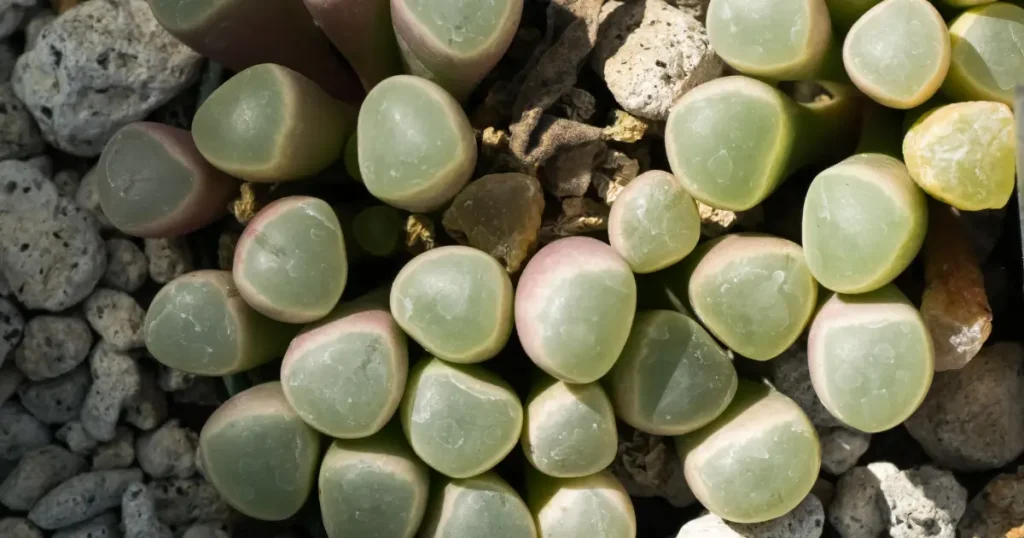
The growth is most active during the spring and summer months when the plant receives ample sunlight. During the winter months, growth may slow down or go dormant.

Source: Etsy
Light Requirements and Cold Hardiness
Fenestraria rhopalophylla ‘Baby Toes’ thrives in bright, indirect sunlight. It prefers a location with partial shade, particularly during the hottest part of the day. While the plant can tolerate full sun, it may require protection from intense sunlight to prevent leaf burn.
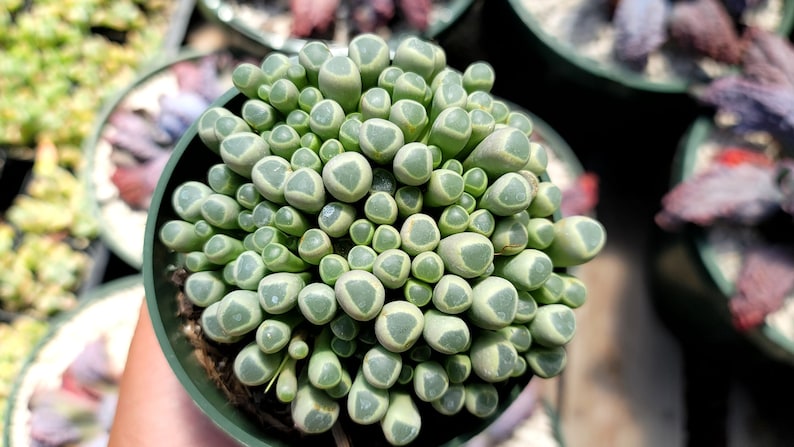
Source: Etsy
In terms of cold hardiness, Baby Toes can withstand temperatures as low as 20°F (-6°C). However, it is best to provide some frost protection during extreme cold spells.

Source: Etsy
‘Baby Toes’ Care and Watering
Caring for Fenestraria rhopalophylla ‘Baby Toes’ is relatively easy, as it has minimal water and maintenance requirements. It is crucial to provide well-draining soil to prevent excess moisture retention, as succulents are susceptible to root rot.
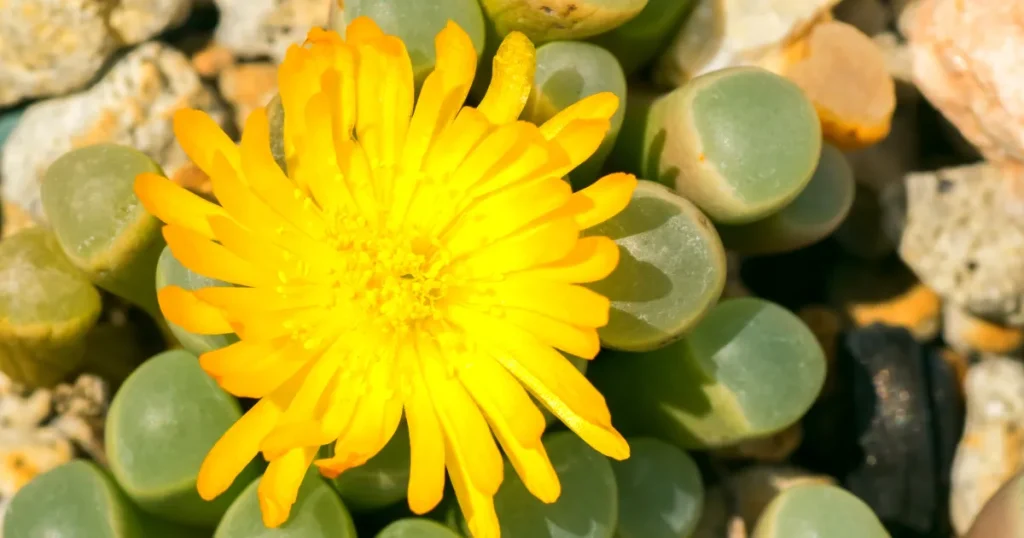
Water the plant thoroughly but infrequently, allowing the soil to dry out completely between waterings. During the active growing season, water approximately once every two weeks. Reduce watering frequency during the winter dormancy period.

Consider amending your soil with Bonsai Jack’s gritty mix to ensure your succulent soil drains quickly to prevent it from staying moist for too long. Source: Etsy
Minimum Temperature Tolerance and Rain Exposure
Fenestraria rhopalophylla ‘Baby Toes’ can tolerate temperatures as low as 20°F (-6°C) for short periods. However, it is advisable to provide protection or move the plant indoors during frosty conditions. While the plant can handle some rain exposure, it is important to avoid overwatering. Excess moisture can lead to root rot and other fungal diseases. Ensure proper drainage and avoid leaving the plant in soggy conditions for prolonged periods.
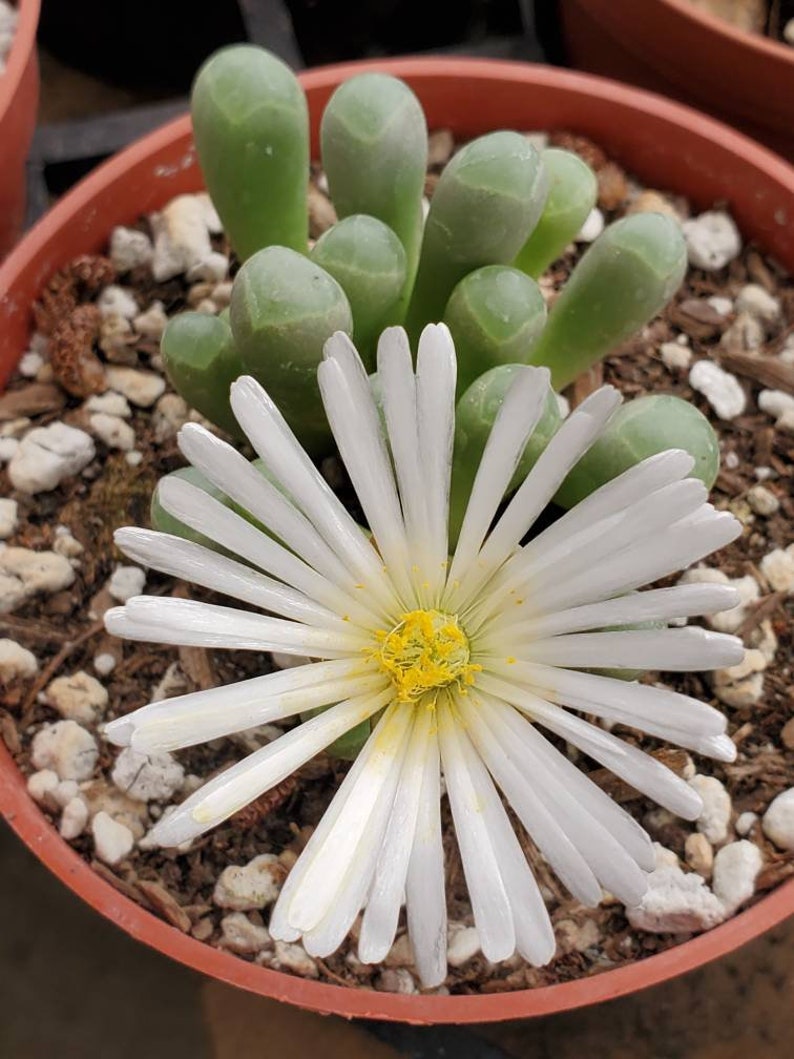
Source: Etsy
When you’re rooting or transplanting your succulents and cacti, use SUPERthrive to help reduce the chance of transplant shock and grow a strong root system.
Fertilizing the Plant
Fenestraria rhopalophylla ‘Baby Toes’ is not a heavy feeder and can thrive without regular fertilization. However, you can provide a diluted, balanced succulent fertilizer during the active growing season to promote healthy growth. Apply the fertilizer sparingly, following the manufacturer’s instructions. It is always better to under-fertilize than to over-fertilize, as excessive nutrients can harm the plant.

Succulent fertilizer available to purchase on Etsy.
Propagation and Pruning
Fenestraria rhopalophylla ‘Baby Toes’ can be propagated by division of the mother plant.
Here are the steps for propagating Fenestraria rhopalophylla ‘Baby Toes’ by division:
- Use a sharp, sterile knife or pruning shears and cut off an offset (pup) from the main plant. Try to get as much root as possible when removing the offset.
- Allow the offset to dry out for 2-3 days. This allows the cut to callus over and prevents rotting.
- Fill a pot with well-draining cactus/succulent soil mix. Make a hole and plant the offset in the soil, making sure the roots are covered.
- Water the planted offset lightly. Allow the soil to dry out completely before watering again.
- Place the potted offset in a warm location with plenty of bright, indirect light.
- Over the next few weeks, roots will begin to grow and the offset will establish itself. Once rooted, you can begin watering more frequently.
- In a few months, the offset will grow into a fully independent plant that can be transplanted.
- Avoid overwatering which can lead to rotting. Let the soil dry out between waterings. Provide sunlight and warm temperatures.
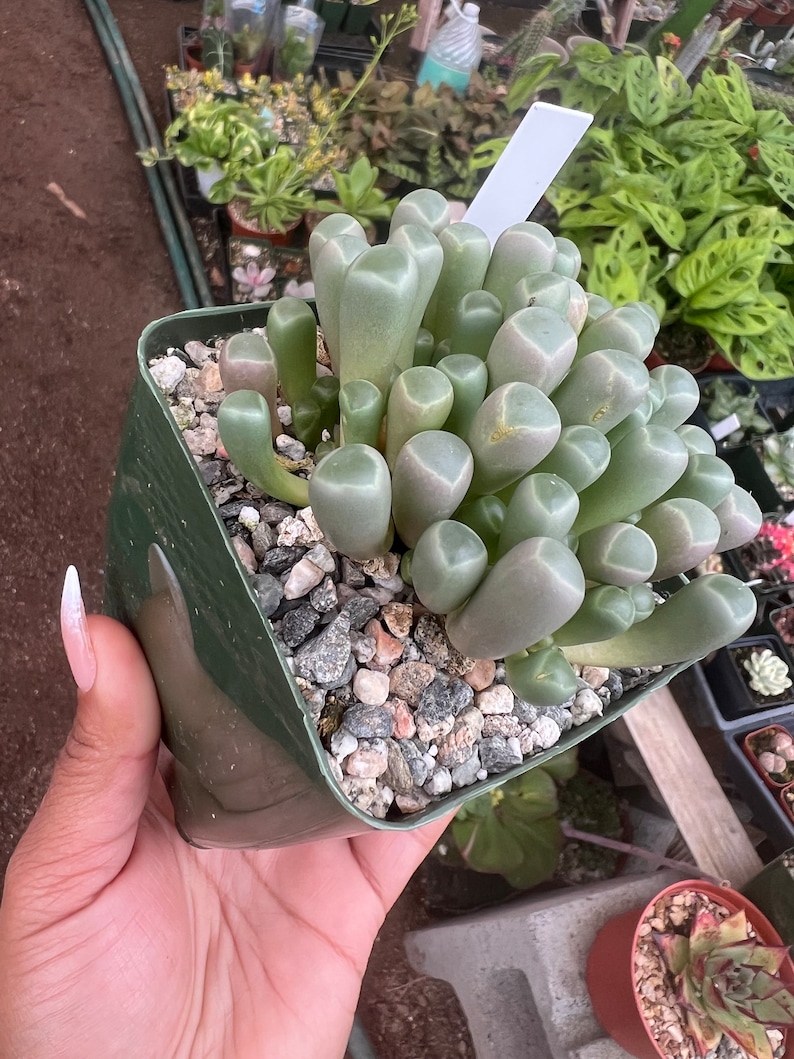
Source: Etsy
As for pruning, Fenestraria rhopalophylla ‘Baby Toes’ generally do not require extensive pruning. However, you can remove any dead or damaged leaves to maintain the plant’s appearance and overall health. Be sure to use clean and sterilized pruning tools to prevent the spread of disease.
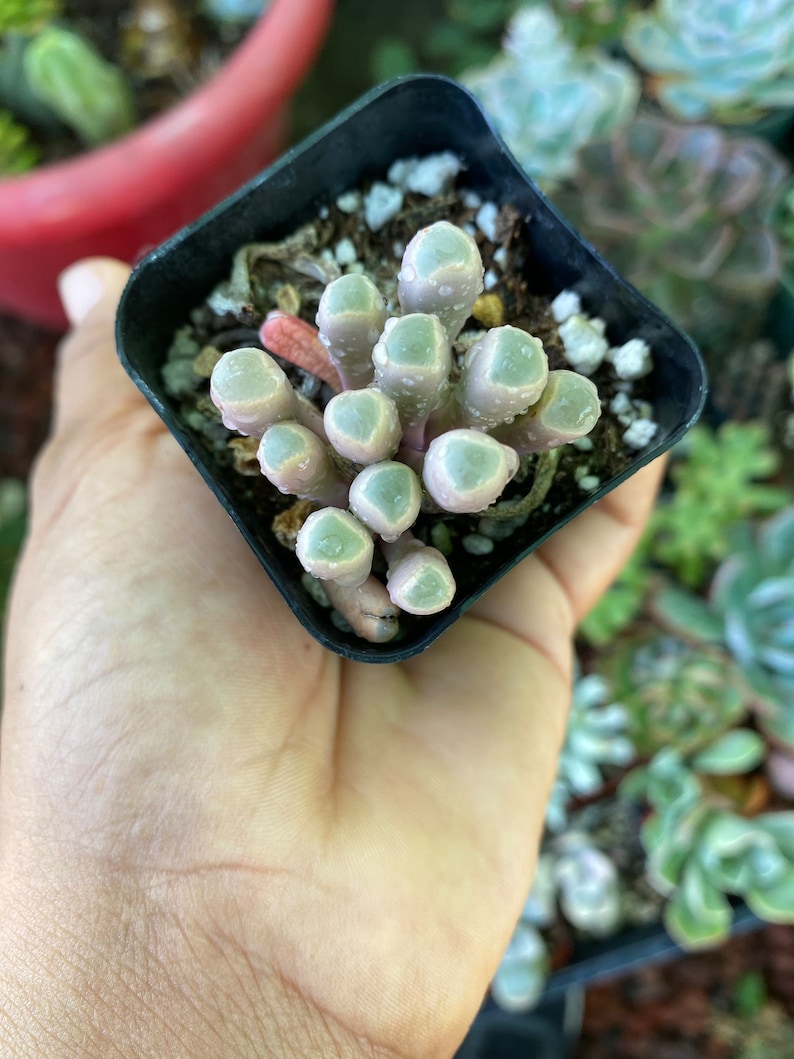
Source: Etsy
Common Problems and Pests
Even though Fenestraria rhopalophylla ‘Baby Toes’ is a relatively low-maintenance plant, it can still encounter a few common problems and pests. Overwatering is one of the main issues, as it can lead to root rot and fungal diseases. To avoid this, always ensure the soil is dry before watering and provide adequate drainage.
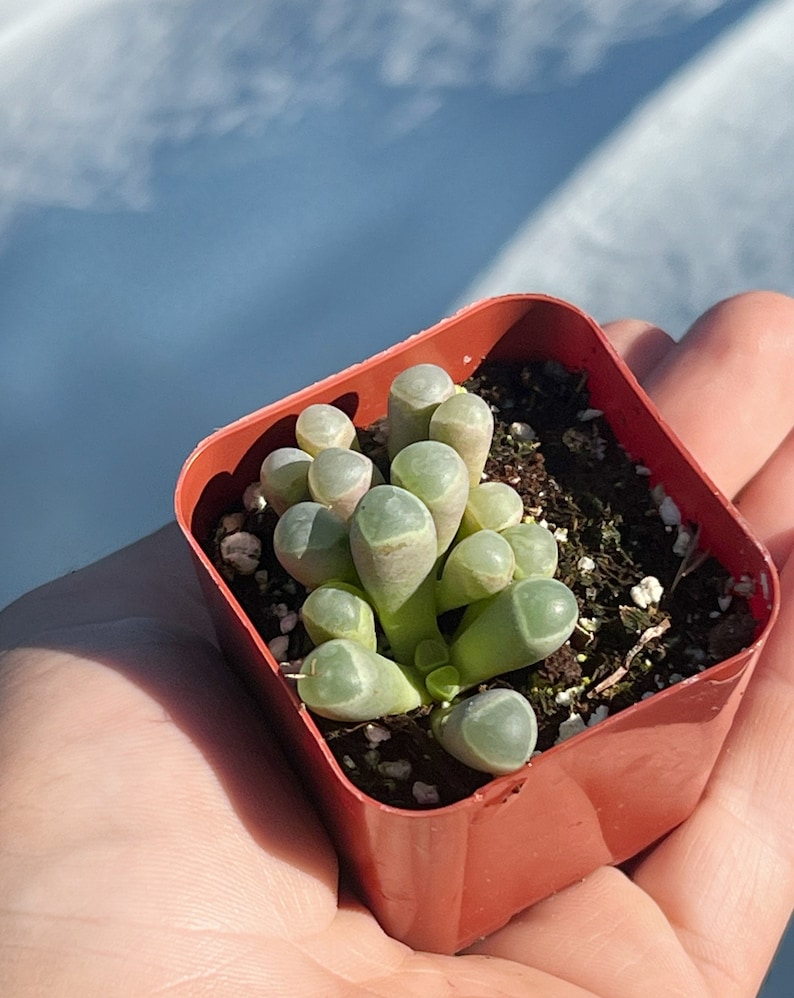
Source: Etsy
Mealybugs and aphids are common pests that may infest Fenestraria rhopalophylla ‘Baby Toes’. These pests can be controlled by gently wiping them off with a cotton swab dipped in rubbing alcohol or by using insecticidal soap. It is important to regularly inspect the plant for any signs of pests and take prompt action to prevent their spread.

As an Amazon Associate I earn from qualifying purchases.
Fenestraria rhopalophylla, or ‘Baby Toes’, is a fascinating succulent with unique adaptations and a compact growth habit. By providing the right care, including proper lighting, watering, and protection from extreme temperatures, you can enjoy the beauty of this plant in your own collection. Remember to keep an eye out for signs of overwatering and pests, and take appropriate measures to address any issues that may arise. With a little attention and care, your Baby Toes will thrive and bring joy to your succulent garden.
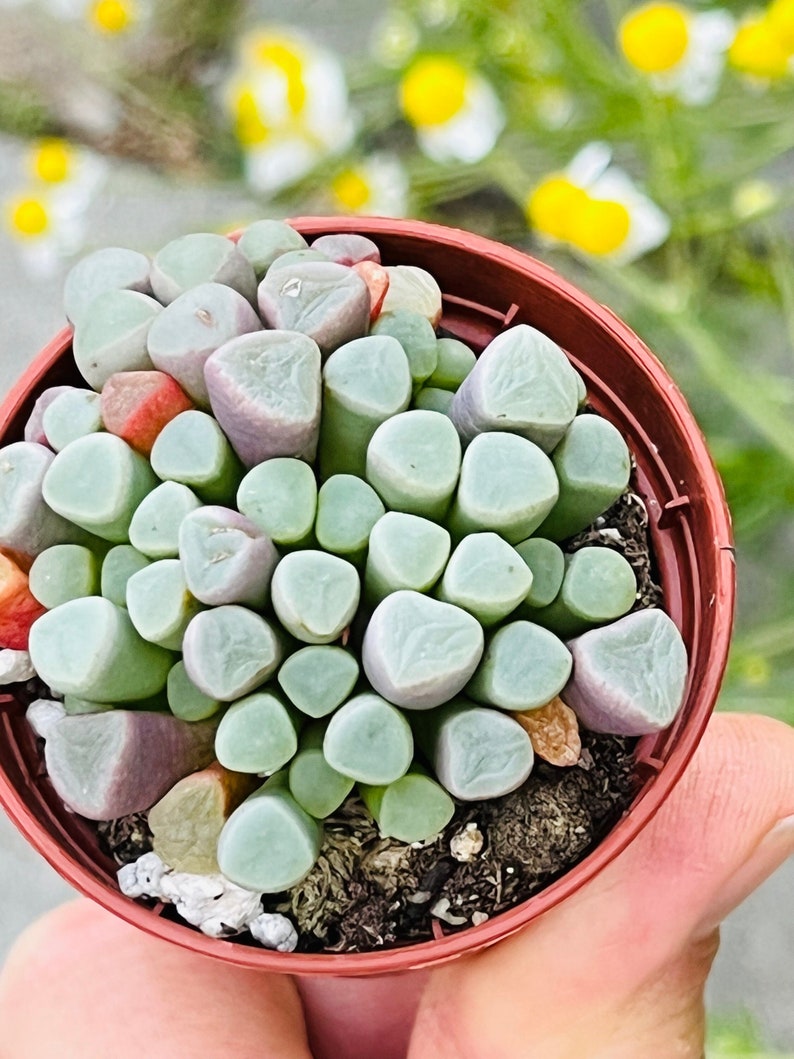
Source: Etsy

